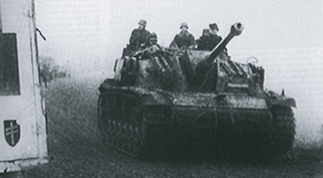
INTRODUCTION:
To understand the complete history of the 3rd Panzer Grenadier Division it becomes important that one understands its origins. The unit that would ultimately become the 3rd Panzer Grenadier Division, was formed in 1934 in Frankfurt/Oder by the expansion of the Reichsheer 8.Infanterie-Division under the cover name Kommandant von Frankfurt. On October 15th 1935 its cover name was dropped and it became known officially as the 3.Infanterie-Division. 
PART I POLAND
Prior to the outbreak of the War, 3 Inf. Div. would be sent to take part in the occupation of the Sudentenland during the Austrian Anschluss. Soon after The 3.Infanterie-Division was mobilized on August 1st 1939 for operations in Poland. When the attack on Poland was launched on September 1st 1939, the 3.Infanterie-Division was part of II.Armee-Korps under 4.Armee, Heeresgruppe Nord. The 4.Armee was to attack into the Polish Corridor from the region of Pomerania in Germany in an attempt to link up with the 3.Armee in East Prussia. This would isolate the Polish coastal forces in the region of Danzig from the rest of the battle to the south. The 3.Infanterie-Division crossed into Poland in the front of the 4.Armee attack against the Polish Corridor. The region of its attack was known as the Tuchola Forest, an area defended only lightly by the Polish 9th Infantry Division and Pomorska Cavalry Brigade. It broke through the Polish and fought across the Brda River west of Crone, where it pursued through the Tucheler Heide to the Vistula (Weichsel) River. The 3.Infanterie-Division then took part in pursuit combat over the Weichsel River in the direction of Modlin. It then took part in security operations against the Bzura Pocket between Woclawek and Wyscogrod, before fighting near Plock and advancing in the direction of Gostynin, ending its stint in Poland near Lowicz before being transferred to the Eifel region of Germany along the German-Luxembourg border.PART II GERMAN FRENCH TRUCKS
When the attack on France and the Low Countries was launched in May 1940 the 3.Infanterie-Division was under III.Armee-Korps, 12.Armee, Heeresgruppe A. It advanced through Luxembourg and Belgium to the Maas River at Nouzonville where it fought across. It then secured the area between Ewergnicourt and Balham before advancing over the Aisne to Asfeld, moving further on to the Canal du Centre in the region Digoin-Chalons, soon after ending the campaign in security operations along the demarcation-line. After the Campaign in the West in October 1940, the 3.Infanterie-Division was reformed and re-designated the 3.Infanterie-Division (mot). Having received many vehicles left behind on the beaches of Dunkirk by the French and British forces. 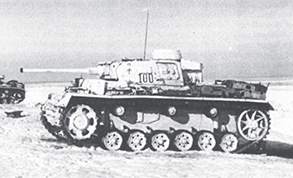
PART III Russia
As a Motorized Division, the 3rd took part in the campaign against the Soviet Union in the Northern sector of the Front, advancing against the Russian city of Leningrad. Later, it was moved south to advance against Moscow in 1942. It then fought in defensive battle against the 1st Soviet Winter Counter-Offensive in the outskirts of Moscow. Later, the 3rd was shifted further south, this time to the Southern Front to take part in the battles across the Ukraine and the Don regions. Held in reserve during the preparation of the assault on Stalingrad in the spring of 1942, the 3.Infanterie-Division (mot) was refitted with the addition of the 103rd Panzer Abteillung which would henceforth attach a battalion sized armored element to the unit. This reflected a new idea in a type of German battle formation focused on fast moving motorized troops accompanied by a battalion of tanks instead of the typical tank regiment associated with panzer divisions. As part of the 6th Armee, they advanced into the Stalingrad region in September of 1942 where, after tenacious fighting, the army group was ultimately encircled and destroyed by the Soviets in late 1942 and 1943. MAP? 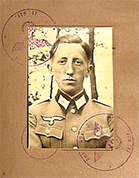 (believed to be the last voice of heard of the 6th Armee prior to capitulation)
(believed to be the last voice of heard of the 6th Armee prior to capitulation)
PART IV Resurrection as 3PGD
The 3.Infanterie-Division (mot) was reformed in the Spring of 1943 in the Lyon region of France, from the few remaining pieces of the original 3.Infanterie-Division (mot) and from the 386.Infanterie-Division(mot) which also originated from the region of Frankfurt/Oder. Resurrecting their regimental numbers, the newly formed 3.Infanterie-Division (mot) was then renamed as the 3.Panzergrenadier-Division after a decree by Hans Guderian that all motorized infantry divisions be redesignated as panzergrenadier divisions.PART V Resurrection as 3PGD ROME STUG III
After formation and refit, the 3.Panzergrenadier-Division was sent to Italy in June 1943 where it was used to protect Rome in the face of resistance efforts. Later they took part in the Battles for Salerno, Cassino, The Bernhard Line and the Anzio beachhead where it fought with particular courage against the American and Commonwealth forces in the areas of Aprilla and Cisterna. Their actions in the battle helped stall the Allied advance and breakout until the general retreat to Rome in May and June of 1944. Heavy Defensive Battles took place in the Bernhardt Line FELDMARSCHELL MAKINSON DECREE 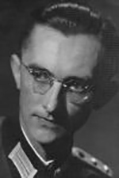 Gerhardt Türke
Gerhardt Türke
PART VI TRANSFER TO FRANCE 3PGD IN TROPS
The remnants of the 3rd were transferred to Florence for refitting in late June and July 1944 and Sent to the Western Front in Bar Du Lac France. In August The Division remained engaged with he Allies before taking part in the general withdrawal across France near Nancy. The August 29. Massacre in the town of Robert E’spagne marks a particularly dark time of the units history becoming involved in reprisals against civilians in response to partisan actions.PART VII Defense of the Reich
In September, the 3rd Panzergrenadier Division deployed towards Metz, fighting here kept the American progress at bay while they attempted to breach the German controlled superforts of the Westwall. For the first time, the steady progress enjoyed by the Allied forces had been halted. Market Garden, Hurtgen and now Metz would form a tough defensive line forward of the Rhine. With the Metz area stable, 3.Panzergrenadier-Division (3PGD) would shift to the Hurtgenwald to reinforce the defense of Aachen. The 3rd would see intense action during the defense of the ancient city in November 1944, known as the "Gateway to the Rhine". It was here that the 3rd Panzer Grenadier Division/8th Regiment really distinguished itself when it held back the American 30th and 1st ID in the Ravelsberg area. Under Leutnant Karl-Heinz Zillies the 10th Kompanie would hold a line of 3 bunkers for five days. One of these bunkers traded hands sixteen times. Bunker 170 under Leutnant Zillies held like iron and never fell. His circular defense of the area consisting of trip wires, remotely detonated mines, explosives, machine gun trenches, and antitank weapons, were impenetrable. He was awarded the Knights Cross for his efforts.
Despite the ultimate withdrawal of the 3PGD and the loss of the city, the fighting provided the Germans the necessary
time to plan for the Ardennes Offensive, later to be known as the Battle of the Bulge. The delays and loss of men
and material in the Hurtgen Forest campaign was unprecedented on the Allied side. For the first time, the American
rate of attrition was higher than the rate of replacement. The Cost to the Division in Particular to those men of
3PGD were high.
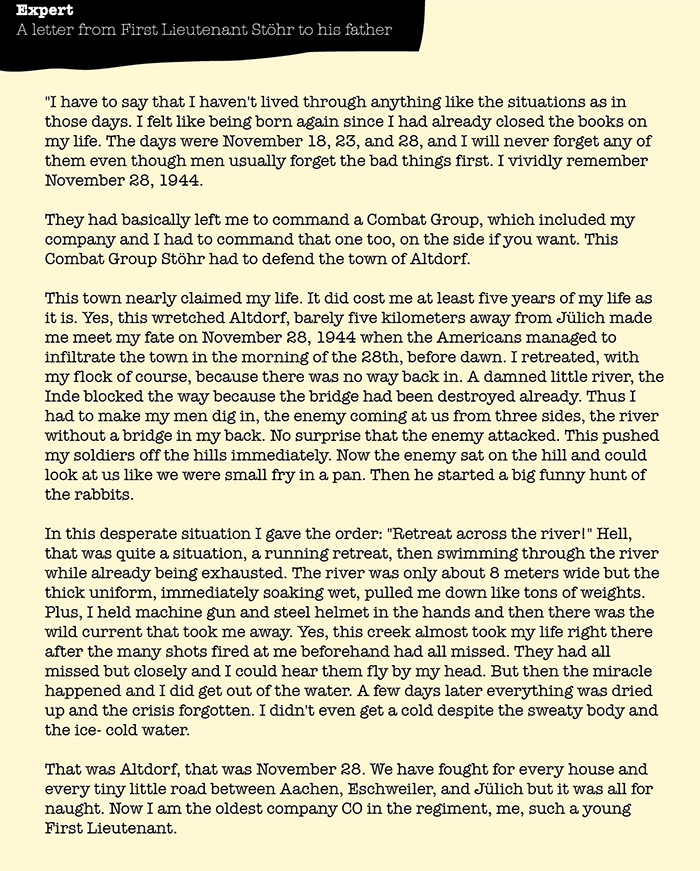
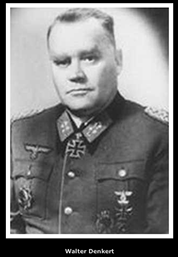

PART VIII Battle of the Bulge
In November 3PGD was pulled out of the line to be rested and refitted in Bedburg Germany. Men were laid to rest from the previous battles. The Offensive "Wacht am Rhein" was now in the assembly stages in December 1944, 3PGD still rebuilding from loses was held in reserves until being tasked with protecting the Northern Flank around Monschau, as part of the 5th Panzer Armee. They would see heavy fighting in the towns of Krinkelt/Rocherath in the area of Elsenborne. Kdr Walter Denkert in his memoirs particularly dismayed that such success hinged on such poor assumptions on the combat readiness of his and other divisions. Held in check at Elsenborne Ridge by massed artillery. 3PGD would be diverted to advance on Bastogne to late however to effect the relief of the 101st via 3rd Armored. The offensive was halted and the bulge collapsed. 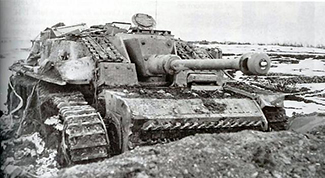
PART IX 1945 To CAPITULATION REMAGEN BRIDGE
3PGD took part in delaying actions during the operations for Eifel in January 1945 and defensive action near Köln and Remagen. In April of 1945 the remaining elements of 3rd Panzer Grenadier Division were part of 300,000 German troops trapped via Allied forces in the Ruhr Salient. They surrendered in April 1945, one month before the end of the War in Europe. The soldiers, the majority of whom were conscripted into the service would return as prisoners to a once beautiful homeland. A land transformed into a land of rubble and ruin. The area of Brandenburg where many soldiers of the 3rd called home was now under Soviet control. Adolf Hilter to whom each soldier swore his oath to defend, had committed suicide the National Socialist government had committed horrific atrocities and taken Germany into utter destruction and starvation. The policies of a ruthless government forever overshadowing each soldier’s personal stories of struggle and sacrifice in combat.